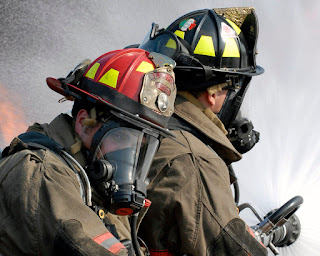 The Story and Commentary:
The Story and Commentary:by Lou Angeli
The story from AP:
PARADISE, Calif. (July 12, 2008)- As hundreds of blazes continue to char California, additional National Guard troops and overseas crews are being called in to assist exhausted firefighters.
Gov. Arnold Schwarzenegger on Friday ordered 2,000 more National Guard troops to join the 400 already on firefighting duty. Australia, Canada, Greece, Mexico and New Zealand are also sending firefighters and equipment, federal officials said. Firefighters in Italy and France have also been placed on alert.
"We are stretched thin, and our firefighters are exhausted," Schwarzenegger said. "The fire season as we've known it is pretty much over. ... Now we have fire season all year round."
Federal officials said they would send more equipment and personnel to California. The federal government has committed $100 million and 80 percent of its firefighting resources to California, said Glen Cannon, an assistant administrator with the Federal Emergency Management Agency.
"We've put a significant amount of resources there, and we'll continue to add resources until we bring the fires under control," Cannon said.
Why Foreign Firefighters?
In a nation with one million firefighters, the question arises -- Why does California need foreign firefighting assistance? It's a good question but it can be explained quite easily..
Wildland firefights, like those in Central California, can be lengthy campaigns often lasting several weeks or a month. With all of California's available forces and 80% of all federal firefighters on the frontlines, it's time now for exhausted crews to be relieved. So why not send in reinforcements from the midwest and the East Coast?
If we were in the Control Truck, we'd learn that Commanders have already written-off 80% of available American firefighters, because they serve on a volunteer basis. As much as volunteers would like to be on the frontlines helping the folks in California, they have full time jobs and therefore a committment to their employers (and families) to show up for work.
The remaining career firefighters serve primarily in municipalities, and with the exception of an occasional brush fire, city crews see little wildland action. To them, fighting a wildland blaze is an alien tactic, far different than tackling a room and contents fire. Add to that the fact that many municipal departments are short-handed, the result of local governments stretching their resources thin by operating with less than minimum staffing. Sending just a dozen guys to the West Coast would leave a giant hole in their own local protection.
So why shuttle in firefighters from the other side of the world? Well, Australia and New Zealand are wilderness countries where "bush" or wildland fires are a part of everyday life. Firefighters down under know the drill all too well -- and are familiar with the dangers. If you need to bring in ringers -- these are the guys. And just two years ago, the Greek Fire Service was confronted with wildfires of epic proportions, as firefronts of 100 miles in length burned from one end of the country until they reached the waters of the Mediterranean.
As many have noted in recent weeks, California's wildfire season is no longer limited to late summer -- it's become a year-round concern. State and Federal Government have only two choices: Let the fires burn -- or beef up protection by converting what is essentially a seasonal emergency service to full time status. And in order to retain well-trained seasonal personnel, federal agencies like the USFS and BLM will need to ante up, paying their people on par with CalFire/CDF and municipal departments.
Gov. Schwarzenegger and administrators from CalFire and OES are keeping their fingers crossed, lighting candles to St. Florian and praying to the thunder gods that Southern California remains fire free. If a blaze like last year's SoCal firestorm were to whip up again in the next few weeks, the system would fall flat on its googles. Those familar air tankers would be replaced by F-15's, creating firebreaks with missles instead of water.
----
Rescources
(1) Associated Press




